In this rapidly developing world of digital design, Figma is still like a torchbearer of innovation, in constant evolution to match the needs of designers, UI/UX professionals, and digital creators. In this comprehensive Figma review, we will unpack its latest iteration,and analyse its features, user experience, performance and much more. If you are looking for a tool that keeps you up with design processes, that never stop evolving, keep reading this article to discover what Figma has in store for you.
Vital Features
Although Figma has always had a wealth of vital features for design enthusiasts, what makes it special in 2024? Designed for usability as well as strength, Figma ensures that designing projects flow seamlessly from conception to completion.
Creating Design Systems:
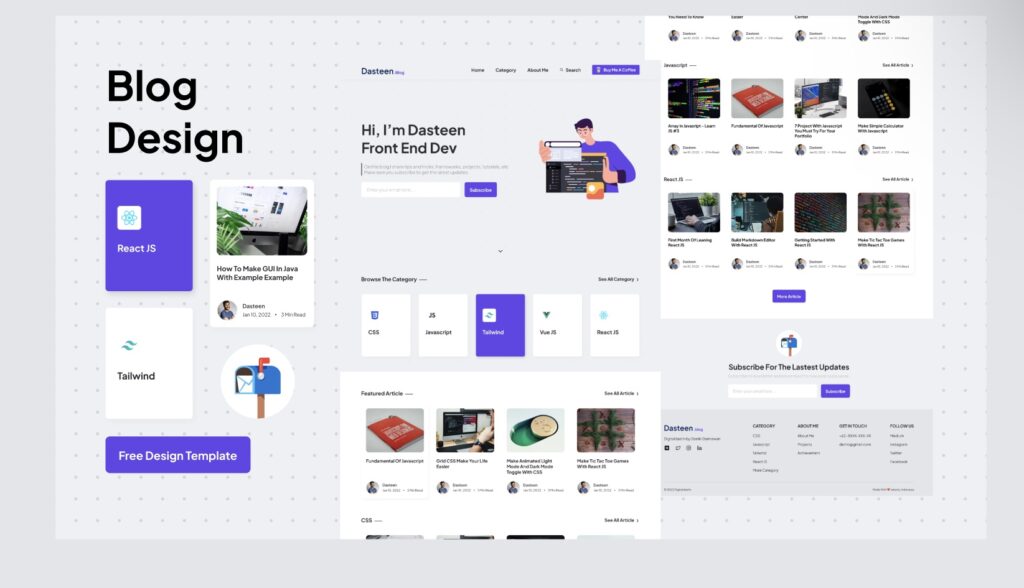
No other tool can come close to how capable and consistent Figma is in creating and managing full-fledged design systems. Through functionalities such as ‘Components’ and ‘Auto Layout,’ you are now able to achieve higher degrees of consistency and productivity within your projects than you ever did before.
Prototyping Made Easy:
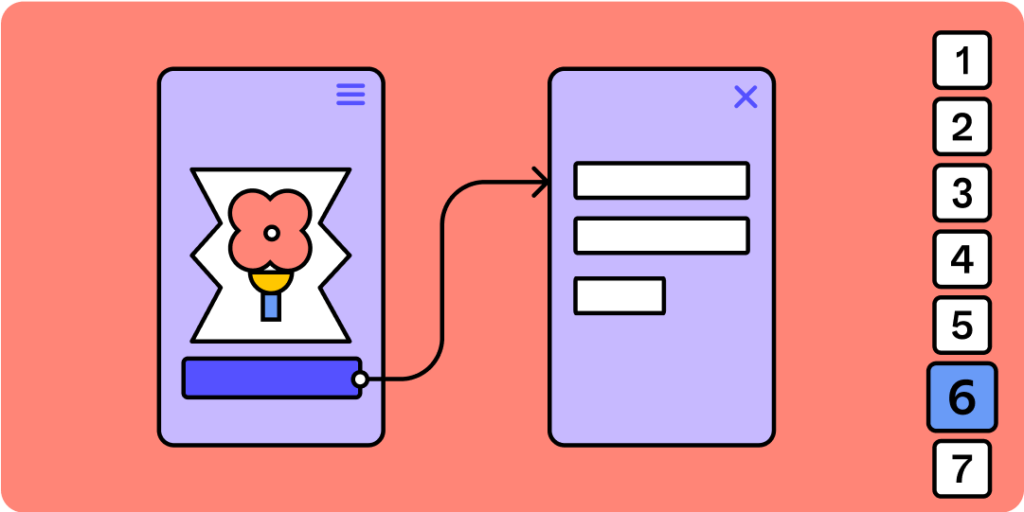
Design is not static; hence, the prototyping tools integrated into Figma have been made accordingly. Consequently, through ‘Smart Animate’ and ‘Interactive Components’, designs can be made interactive thus, resulting in richer user experiences even before any code is written for them.
Real-Time Collaboration:

What’s the fun of designing without sharing or building with others? The standard industry practice is represented by real-time collaboration. On the Figma platform, multiple team members can work on the same files no matter where they are or which device they use.
Cross-Platform Synchronization:
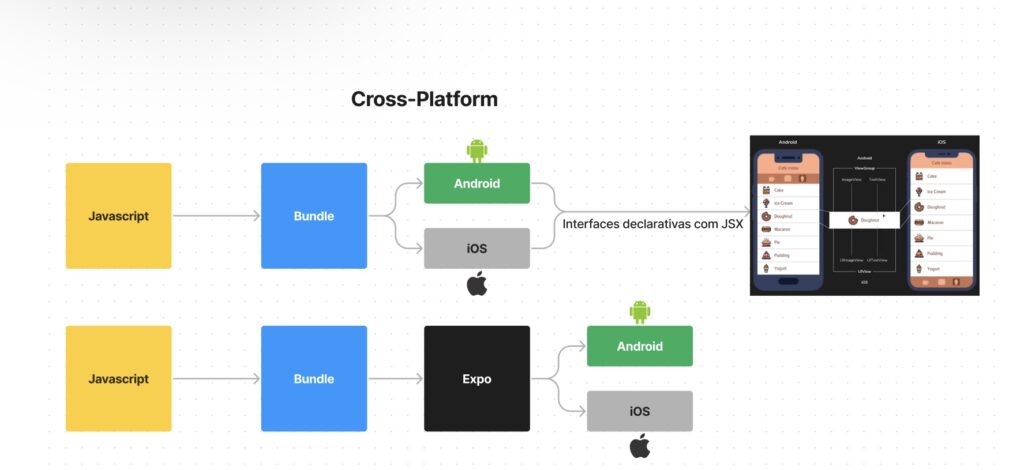
Operating system bias is foreign to Figma. All your work is accessible via any device because of its cloud-based nature, thereby enhancing true flexibility during the design process.
Customizable UI Kits:
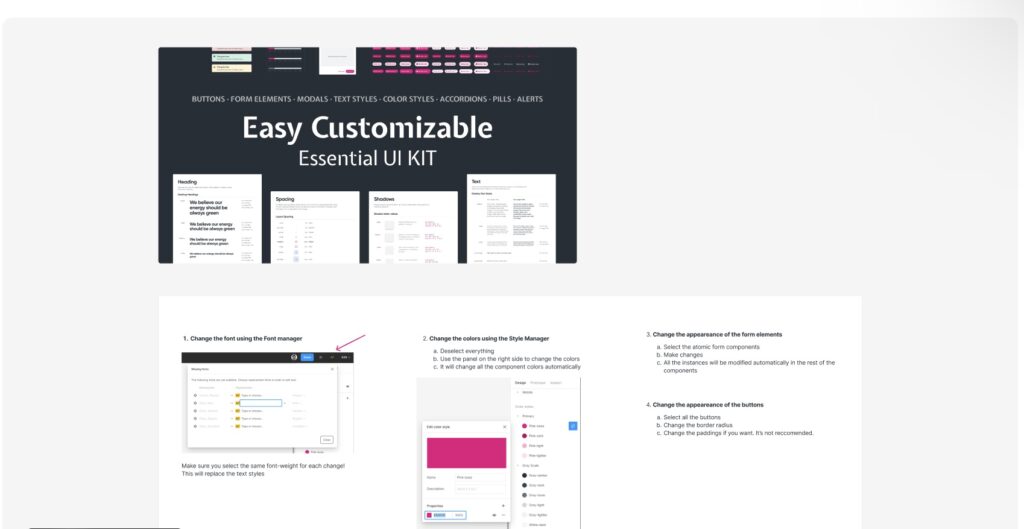
If you are a designer, perusing through an impressive collection of UI kits and online resources from Figma’s library will be quite useful. If you want to make a new start or to freshen up an existing project, Figma has a lot of themes and elements to choose from.
What’s New in Figma in 2024?
This year, Figma has introduced revolutionary additions that have challenged the possibilities in design. Let’s see them in detail:
AI-Driven Design Suggestions:
Now Figma provides intelligent suggestions that can make your designs better. These AI tools help you think outside the box and explore new creative avenues such as color palettes and layout adjustments.
Enhanced Feedback and Revision Tools:
Gathering user feedback and revisions is easier than ever before. The system of feedback that Figma provides is very sturdy, hence users can engage in threaded conversations and annotate directly on the design canvas.
Advanced Collaboration Statistics:
Larger teams must understand collaboration patterns to improve efficiency. Figma now provides a detailed report that illustrates how your team worked together, identifying bottlenecks and streamlining workflows.
Inclusive Design Capabilities:
To facilitate accessibility in designs, Figma has integrated tools and resources that will easily assist all designers to come up with more inclusive content.
User Experience and Interface:
Figma’s user experience (UX) and interface (UI) are crucial aspects of its success and this year is no different regarding this. As always, Figma keeps fine-tuning its layout interplays, making sure each action is well-thought-out and contributing towards a smoother design process.
Ease of Use:
Learning design or expert pro? The user-friendly interface by Figma will help you either way. With a layout that scaffolds the design thinking process, Figma lessens the time taken during learning and enhances productivity.
Intuitive Collaboration:
Figma’s experience is largely about collaboration. Many people can work on the same thing at once and see it changing instantly in real time. This speeds up design time as well as helps in creating an atmosphere of teamwork in design teams.
Device-agnostic Design:
With Figma, you do not have to worry about the interface limitations imposed by devices or resolutions. You can switch from working on a desktop to using a tablet while retaining context and continuity of work smoothly.
Performance and speed:
Figma is a performance and speed benchmark, offering unprecedented efficiency and smoothness. This is what makes Figma suitable for the high demands of contemporary-style workflows. This newest version has made substantial technological improvements that permit faster load times even when complex projects and larger design systems are used. Here are some of the key upgrades:
Optimized Rendering Engine:
Figma uses a new rendering engine that takes advantage of the latest web technologies to reduce the display time of high-fidelity graphics and detailed designs, making it responsive during both the creation and presentation phases.
Improved Asset Loading:
Figma has refined loading assets into their platform from external sources. Images, vectors, and other design assets now load more quickly because they are intelligently cached for future sessions thus, improving the design process.
Real-Time Performance Monitoring:
This feature is very useful for teams working on big projects; this is why Figma brings real-time monitoring to any kind of performance. The tools identify potential bottlenecks or issues that can slow down design processes as much as possible so designs can be rectified right away.
Streamlined Collaboration:
This feature extends to collaboration features in Figma. It ensures that real-time edits, comments, or feedback do not affect overall performance. Even with multiple collaborators working simultaneously on a document, its interface remains responsive and updates occur instantaneously.
Cloud Optimization:
There have been further optimizations in Figma’s cloud-based architecture. This means faster project load and save speeds while also ensuring accessibility across all devices regardless of connection type.
Through these developments, Figma ensures that you and your team can concentrate on creativity and innovation without any technical limitations. Figma is aiming at an experience that is seamless, fast and responsive enough to respond to modern complex digital design dynamics.
Collaboration and Teamwork
In today’s digital designing world, collaboration & teamwork are not just advantageous but necessary. It was by far an evolution in terms of this aspect that Figma 2024 has made sure that teams can work together better than ever before. With the platform’s real-time collaboration capabilities, designers, project managers and stakeholders alike can interact with designs concurrently to provide immediate feedback and suggestions. This leads to a dynamic and iterative design process where ideas can be modified as they are tested.
Shared Editing:
One of the most notable features of Figma is its shared editing, which enables several users to make changes to a design file at once. The process is truly collaborative in this sense since team members can observe these transformations as they occur and contribute their ideas immediately.
Permission Levels:
Customizable permission levels have also been introduced by Figma so that not all collaborators should have equal access levels. This way, while enabling collaboration, control over the integrity of a design is still maintained. Team leaders can allocate permissions from just read-only rights up to full editing rights depending on how much input each team member brings.
Version History:
When you talk about collaboration many times it involves multiple drafts & iterations. In such cases like the one described above (version history), Figma is simply irreplaceable when it comes to saving your time because it will show you all changes made in your files since it was created. Hence, one does not struggle to try to establish who did what but by reverting or going through former versions, you can know how much a design shape-shifted over the years.
Live Share:
This feature enables collaboration among different groups of designers. It provides stakeholders with an opportunity to provide comments on the canvas during live design sessions. This is most useful during final reviews, customer presentations or team brainstorming meetings because it makes the process shorter and faster.
In short, Figma 2024 concentrates on these collaborative aspects thus; not only does it reduce the time spent in designing but also promotes a culture of teamwork and shared ownership over projects. The platform acknowledges that great designs are rarely the result of solitary effort; instead, they emerge from a mixture of diverse ideas and perspectives that are brought together seamlessly through intuitive collaboration.
Integrations and Ecosystem
Figma’s ecosystem is designed to be as expansive and interoperable as possible, allowing it to seamlessly fit into any design workflow. This flexibility is largely a result of its numerous tool and platform integrations.
Extensive Plugin Library:
Figma has an extensive library of plugins which can serve various design needs and processes. The plugins available allow Figma to go beyond its original plan; they complement its core functions making it a multipurpose tool that can meet the specific needs of any project.
Seamless Integration with Other Software:
Figma recognizes the need for harmonization between itself and other software solutions used by professionals. It has therefore provided integration capabilities with Slack, JIRA, and GitHub among other top project management, development as well and collaboration tools. This enables a smooth transition from concept GitHub to actual product development through more cohesive product development cycles.
API for Custom Integration:
For firms or groups with unique requirements, there are custom integrations made possible by Figma’s API. Teams can streamline their design process within their workflow, automate some repetitive tasks and even create proprietary tools exploiting Figma’s powerful design capabilities.
Community-driven Templates and Resources:
Besides what comes preloaded in Figma’s official version, its community aspect is amazing. Designers share templates, UI kits and other resources, promoting a sharing culture in the learning environment. This enhances the pace of design for many, while at the same time continuously improving design across communities.
These aspects of Figma’s integration & ecosystem emphasise that it is not only a tool but also serves as a platform that supports and empowers broader designing & developmental workflows at once.
Security and Privacy
In today’s digital age, the security and privacy of design tools are not just a concern but a necessity for businesses and individual users alike. To this end, Figma has put in place robust measures to protect user data.
End-to-End Encryption:
All communication from Figma is end-to-end encrypted to ensure the security of data while in transit. Whether it is design files, feedback or even chat communications within teams, all information is secure from unauthorized access.
Robust Authentication Protocols:
An additional security layer has been created by Figma through support for multi-factor authentication (MFA). With these measures in place, you can be sure that only verified individuals get into your accounts.
Regular Security Audits:
Third-party experts regularly conduct security audits on Figma to maintain the highest standards of safety. This assures that possible weaknesses are identified and appropriately addressed to keep the platform safe.
Data Privacy Compliance:
The organization commits itself to comply with global data protection guidelines such as the General Data Protection Regulation (GDPR) and the California Consumer Privacy Act (CCPA). Such a commitment ensures that your privacy remains sacrosanct with clear guidance on how data is collected, used and shared.
User Control Over Data:
One important part of Figma’s privacy approach is giving control back to its customers. You have power over your records including exporting and also deleting them, thus controlling personal and project information.
These measures, among others, taken by Figma demonstrate its dedication to integrating inventive design partnerships with strict safety and privacy restrictions. Trust and reliability are important aspects of Figma’s service provision that make it a safe platform for designers and teams worldwide.
Pricing and Plans
Figma’s pricing plans are tiered so that they can serve different types of users including individuals, small groups and large enterprises. Each tier has more capabilities and features than the previous one giving you a chance to choose what best suits your requirements as well as budget.
Starter (Free):
This plan is suitable for those who have just started designing and it can be used by either an individual or a small team. It comes with all the basic Figma tools, supports up to 3 projects with unlimited cloud storage, allows up to 2 editors, plus provides access to a huge marketplace of resources and templates where you may find any kind of design elements.
Professional ($12/month per editor):
The Professional plan tends to target professional designers or medium-sized teams. You will get unlimited projects & version history here along with advanced sharing & collaboration features. It is a good deal for teams that want to streamline their design process and increase productivity.
Organization ($45/month per editor):
Larger teams or organizations would rather use this category to have access to everything Figma offers including related services such as single sign-on (SSO), unified billing, and configurable team libraries amongst others for maintaining consistency across complex projects. It is recommended for groups that need to scale their design operations effectively.
Enterprise ($75/month per editor):
For very big organizations which require the maximum control, support and security possible, there is an Enterprise package which includes all offered at the Organization level plus custom branding, dedicated success managers and advanced security features ensuring compliance with corporate standards. If your organization plans on deeply integrating Figma into its design and development ecosystem then this package will work well.
For more detailed information about each one of these plans as well as to determine what fits you best feel free to visit Figma’s pricing page.
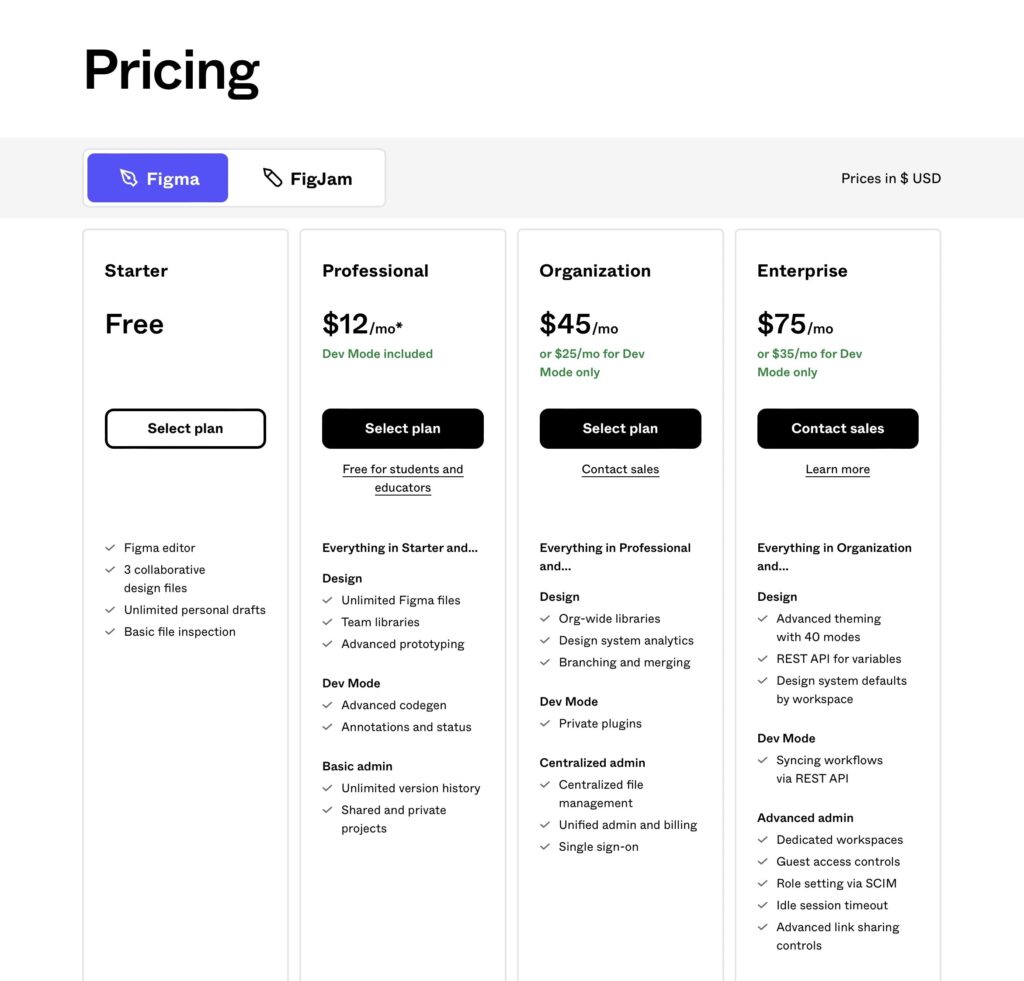
Figma’s Competitors in 2024:
Figma is one of those leading cloud-based design tools that offer collaboration, realism as well as vector graphics. However, the dynamic nature of the design tools market demands an understanding of who its competitors are. This report is a deep dive into the best alternatives to Figma that currently exist:
InVision:
InVision possesses a huge library of design resources as well as prioritizes prototyping and user testing. However, when it comes to service and support, ease of integration and deployment, and evaluation and planning, Figma surpasses InVision. InVision’s pricing model includes a free plan while the Pro option costs $4 per month per user.
Sketch:
Sketch is a very close competitor to Figma especially because they both have vector-based design capabilities. While both enable sharing through cloud services, Figma is superior with better real-time collaboration features as well as prototyping ones. For a Mac-only license, you will pay once $120 for Sketch.
Adobe XD:
Despite unsuccessful acquisition trials from Adobe on Figma, Adobe XD remains formidable competition due to its synergized nature with other Adobe products in the market. However, it does not have real-time collaboration or advanced prototyping like what Figam offers. Free for individuals but teams will pay $22.99/month for each user in Adobe XD.
Affinity Designer:
Affinity Designer developed by Serif provides advanced vectored tools besides having raster support coupled with a friendly-user interface which designers often look for when selecting software with rich functionality. Although lacking real-time collaboration or prototyping functions which are found in Figma Affinity Designer still ranks highly among other market players. You will pay once $49.99 for Affinity Designer.
Canva:
Canva is a simple design tool which also includes features that allow collaboration, especially for people with limited design resources. It, however, offers an attractive option in the world of design tools because it has a user-friendly interface and affordability. The free version is available for individuals while enterprise teams have to pay $30 per month per person.
Figma faces strong competition from InVision, Sketch, Adobe XD, Affinity Designer and Canva all of which offer different strengths as well as features that are desirable in each case. But Figma stands out in terms of service and support, ease of integration and deployment. The other companies still come up with very interesting alternatives at different prices. The changes in the marketplace for such tools mean more choices for you and better tools to make outstanding designs than ever before.
Conclusion
Figma takes it further by building upon existing strong foundations; bringing it up even higher. With improved AI functionalities, revamped UX and a continued emphasis on collaboration and security, Figma is still a preferred tool amongst designers all over the world. This makes it an intriguing platform for personal and professional projects alike considering the possibilities it has for innovation and integration.
In a nutshell, Figma is not like most design tools that are just there, it exists at the forefront of the design revolution.
Are you ready to take your design process to the next level? Whether you’re working alone or as part of a group of designers, Figma has something in store for you. Experience what Figma can do today and see how it will redefine design thinking for you.
FAQs
Q: What is Figma?
A; Figma is an online tool used by designers to make visual interfaces together through real-time feedback sharing as well as collaboration features.
Q: Is Figma free to use?
A: Yes, users can access some aspects of this software for free but there are other paid options such as Professional and Enterprise plans available for those who want additional functionality.
Q: How does Figma support collaboration?
A: It permits multiple people to work concurrently on a project with changes being shown in real time thus promoting an interactive product designing process.
Q: Can Figma be used for prototyping?
A: Of course, no coding skills are required to create interactive prototypes from designers using advanced prototyping features that come with Figma.
Q: Does Figma work on all operating systems?
A: Figma is a web application and therefore can run on operating systems such as Windows, Mac OS, Linux and even Chromebooks.
Q: What securities does Figma employ to protect my designs?
A: Figma encrypts your data with industry-standard methods and allows you to determine who sees or edits your designs through powerful access controls.
Q: Can I bring in other software’s existing designs into Figma?
A: Certainly, Figma can be used to import from other design tools so that one can move seamlessly from their previous works.
Q: Does Figma have a version control system?
A: Indeed, every time you work on changes and save them, Figma makes a version making sure that at any point in time, you can always go back.
Q: How does Figma play with the other tools?
A: Figma liners up well with many project management, developer tools, and some more design tools too to smoothen things for you.
Q: Could I do graphic design and branding with it?
A: Yes, the rich set of features provided by Figma support different types of design including UI/UX design, graphic design as well as branding projects.
Q: Does Figma have a mobile app?
A: To make sure all devices display correctly when viewed on iOS and Android gadgets respectively; there is a companion app available for this purpose that can be downloaded onto these devices by those who use them.
Q: How does the team library feature in Figma work?
A: This is where components are shared between team members so that there are no inconsistencies between their respective designs as they keep updating them.
Q: Can people without a background in design use Figma?
A: Certainly yes! Newbies are not left out because of its friendly user interface as well as the numerous resources that come along with it.
Q: What kind of customer support does Figma provide?
A: Through documentation, an active community and direct support options for Professional and Enterprise plans.

